Ss Prokofiev ballet "Romeo and Juliet"
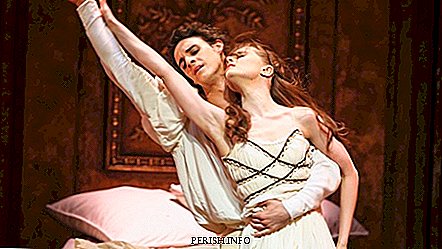
World literature knows a lot of beautiful, but tragic love stories. Of this set, one stands out that is called the saddest in the world - the story of two Veronese lovers Romeo and Juliet. For more than four centuries, this immortal tragedy of Shakespeare has stirred the hearts of millions of caring people - it lives in art as an example of pure and real love, which was able to overcome anger, enmity and death. One of the brightest musical interpretations of this story for all the time of its existence is the ballet of S. Prokofiev "Romeo and Juliet". The composer managed to miraculously "transfer" into the ballet score the entire complex fabric of Shakespeare's narration.
A summary of Prokofiev’s ballet Romeo and Juliet and many interesting facts about this piece can be found on our page.
Characters | Description |
| Juliet | Signor's daughter and Capulet's signora |
| Romeo | son of montecchi |
| Signor Montecchi | head of the family Montecchi |
| Signor Capulet | head of the capulet family |
| Signora Capulet | Signor Capulet's wife |
| Tybalt | Juliet's cousin and Signore Capulet's nephew |
| Escal | Duke of Verona |
| Mercutio | friend Romeo, escal's relative |
| Paris | Earl, a relative of Escal, Juliet's fiance |
| Padre Lorenzo | Franciscan monk |
| Nurse | Juliet's nanny |
Summary
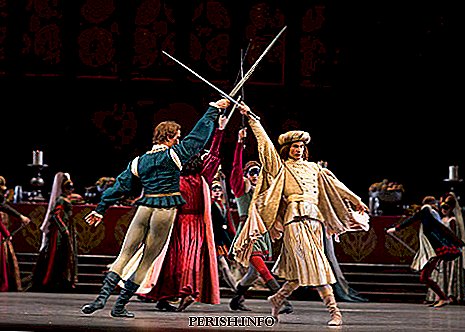
The plot of the play takes place in medieval Italy. Between the two famous Veronese families of Montecchi and Capuleti, hostility has lasted for many years. But before true love there are no boundaries: two young creatures from warring families fall in love with each other. And nothing can stop them: neither the death of a friend Romeo Mercutio, who fell from the hand of cousin Juliet Tiebald, nor Romeo’s subsequent revenge on a friend’s killer, nor the upcoming wedding of Juliet with Paris.
Trying to avoid a hated marriage, Juliet turns for help to Father Lorenzo, and a wise priest offers her a cunning plan: the girl will drink the drug and plunge into a deep sleep, which others will accept for death. Only Romeo will know the truth, he will come to the crypt behind her and will secretly take her away from her native city. But the evil rock hovers over this couple: Romeo, having heard about the death of her beloved and never found out the truth, drinks poison near her coffin, and Juliet, awakened from the potion, upon seeing the breathless body of her lover, kills herself with his dagger.
| Duration of performance | |
| I Act | II - III Act |
| 40 min | 85 min. |
A photo:

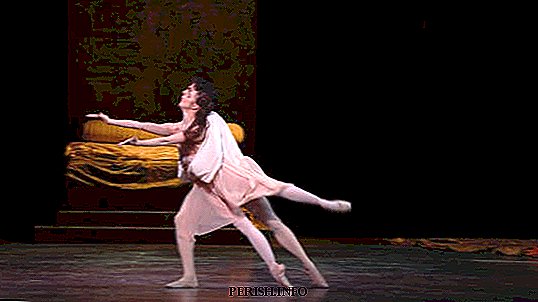
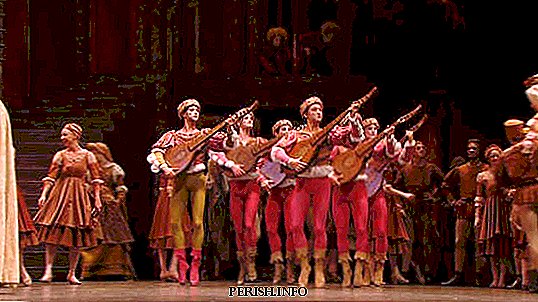
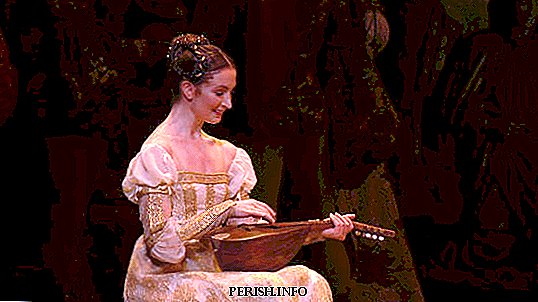
Interesting Facts
- The basis of the tragedy of W. Shakespeare are real events. The unfortunate love story of two teenagers from warring noble families happened at the very beginning of the 13th century.
- In the first version of the ballet, presented by S. Prokofiev to the Bolshoi Theater, there was a happy ending. However, such an arbitrary treatment of Shakespeare's tragedy caused a lot of controversy, with the result that the composer composed a tragic ending.
- After an incredibly successful production of "Romeo and Juliet" with G. Ulanova and K. Sergeev in 1946, director Leonid Lavrovsky received the post of artistic director of the Bolshoi Theater.
- The famous musicologist G. Ordzhonikidze called the performance a symphony-ballet, because of its rich dramatic content.
- Often in various concerts there are separate ballet numbers in the symphonic suites. Also, many numbers have become popular in the piano arrangement.
- In total, the score of the work includes 52 expressive melodies of different character.
- In 1954, the ballet was filmed. Director Leo Arnshtam and choreographer L. Lavrovsky made their film in the Crimea. The role of Juliet was assigned to Galina Ulanova, Romeo - Yuri Zhdanova.
- In 2016, a very unusual ballet performance was performed in London, in which the famous outrageous singer Lady Gaga took part.
- The reason why Prokofiev originally created a happy ballet finale is extremely simple. The author himself admitted that the whole thing is only that the characters can continue to dance.
- Once Prokofiev himself danced in a ballet performance. This happened during a concert in the Brooklyn Museum. The well-known choreographer Adolf Bolm presented to the public his own reading of the piano cycle "Fleeting", where Sergey Sergeevich himself performed the piano part.
- In Paris, there is a street named after the composer. It rests on the street of the famous impressionist Claude Debussy and is bordered by the street of Mozart.
- Galina Ulanova, the leading actress in the performance, initially considered Prokofiev’s music unsuitable for ballet. By the way, this particular dancer was the favorite of Joseph Stalin, who many times attended performances with her participation. He even proposed to make the finale of the ballet more light so that the public could see the happiness of the characters.
- The fact that Prokofiev turned to the tragedy of Shakespeare is called by the researchers as a very bold step. The opinion was that complex philosophical topics could not be conveyed in ballet.
- During the preparation for the long-awaited premiere of the play in 1938, Prokofiev did not want to give in to the choreographer Lavrovsky, who constantly demanded to make some changes and changes to the score. The composer replied that the performance was completed in 1935, so he would not return to it. However, soon the author had to give in to the choreographer and even finish up new dances and episodes.
Popular numbers
Entry (love theme) - listen
Dance of the Knights (Montagues and Capulets) - listen
Juliet girl (listen)
Doom Tybalda - listen
Before parting - listen
History of creation
Znamen This ballet S.S. Prokofiev was written after the tragedy of Shakespeare of the same name, which was created in 1595 and has since won the hearts of millions of people around the world. Many composers paid attention to this work, creating their works: Gounod, Berlioz, Tchaikovsky and others. Returning from a trip abroad in 1933, Prokofiev also turned his attention to the tragedy of Shakespeare. Moreover, this idea was suggested to him by S. Radlov, who at that time was the artistic director of the Mariinsky Theater.
This ballet S.S. Prokofiev was written after the tragedy of Shakespeare of the same name, which was created in 1595 and has since won the hearts of millions of people around the world. Many composers paid attention to this work, creating their works: Gounod, Berlioz, Tchaikovsky and others. Returning from a trip abroad in 1933, Prokofiev also turned his attention to the tragedy of Shakespeare. Moreover, this idea was suggested to him by S. Radlov, who at that time was the artistic director of the Mariinsky Theater.
Prokofiev was very pleased with this idea and he set to work with great enthusiasm. At the same time, the composer also developed the libretto with Radlov and critic A. Piotrovsky. Three years later, the initial version of the performance was shown by the composer at the Bolshoi Theater, where the first production was expected. If the management approved the music, then a somewhat free interpretation of the plot was immediately rejected. The happy ballet finale did not fit the tragedy of Shakespeare. After some controversy on this topic, the authors nevertheless agreed to make corrections, bringing the libretto as close as possible to the original source and returning the tragic finale.
Having once again studied the score, the directorate did not like the musical part, which was considered "non-dancing". There is evidence that such captiousness is connected with the political situation. It was at this time that the ideological struggle with many major musicians unfolded in the country, among them D. Shostakovich with his ballet "Bright Stream" and the opera "Lady Macbeth". In this case, the Directorate most likely decided to exercise caution and not take too much of a risk. The long-awaited premiere was scheduled for the end of 1938, but it could not take place. A significant obstacle was that one of the librettists (A. Piotrovsky) was already repressed, and his name was deleted from documents related to ballet. In this regard, L. Lavrovsky became a co-author of the librettists. The young, promising choreographer for about 10 years was fond of ballet performance, and Romeo and Juliet became the real pinnacle of his work.
Production history

The premiere of the performance took place in the city of Brno (Czech Republic) in 1938, only the composer himself could not attend. How did it happen that for the first time the work of the Soviet composer was presented to the public there? It turns out that just in 1938 Sergey Sergeevich went on tour abroad as a pianist. In Paris, he presented to the public Suites from Romeo and Juliet. In the hall just at that time there was a conductor of the Brno Theater, who liked Prokofiev’s music. After talking with him, Sergey Sergeevich provided him with copies of his suites. Ballet performance in the Czech Republic was very warmly received by the public and appreciated. The ballet master Ivo Vanya Psot, who also performed the role of Romeo, and the art director V. Skrushniy, worked on the performance. Conducted by K. Arnoldi.
The Soviet public was able to meet with the new creation of Prokofiev in 1940, during the production of Leonid Lavrovsky, which was successfully held at the Leningrad Theater. S. Kirov. The main parts were performed by K. Sergeev, G. Ulanova, A. Lopukhov. Six years later, Lavrovsky presented the same version in the capital, along with conductor I. Sherman. On this stage, the performance lasted about 30 years and for all the time it was performed 210 times. After that, he was transferred to another stage in the Kremlin Palace of Congresses.
Prokofiev's ballet constantly attracted the attention of many choreographers and directors. Thus, a new version of Yuri Grigorovich appeared in June 1979. Natalya Bessmertnova, Vyacheslav Gordeyev, Alexander Godunov played the main roles. This performance was given 67 times until 1995.
The performance of Rudolf Nureyev, successfully presented in 1984, is considered to be more gloomy and tragic, compared to previous versions. It was in his ballet that the value of the role of the protagonist Romeo increased and even became equal to the part of his beloved. Up to this point, primacy in the performances was assigned to prima ballerina.
The version of Joel Bouvier can be called an abstract production. She was presented in 2009 on the stage of the Bolshoi Theater of Geneva. It is noteworthy that the choreographer does not fully use the events presented in Prokofiev’s score. Everything is aimed at showing the internal state of the main characters. The ballet begins with the fact that all participants belonging to the two warring clans, line up on the stage almost like football teams. Romeo and Juliet now have to break through to each other.
This media show, in which nine Juliet, presented Mauro Bigonzetti in his version of Prokofiev’s classical ballet in Moscow, at the festival of contemporary dance in November 2011. His bright and eclectic choreography focused all the attention of the audience on the very energy of the dancers. And the solo parts themselves are absent. The production was transformed into a show where media art and ballet merged closely. It is noteworthy that the choreographer swapped even the musical numbers themselves and the performance begins from the final scene.
An interesting version was shown in July 2008. Unlike the others, this ballet was performed in its original edition, dated 1935. The performance was presented at the Bard College Festival in New York. Choreographer Mark Morris returned the full composition, structure and most importantly, a happy final of the score. After a successful premiere, this version was delivered in major European cities.
Some classical works are considered to be the most important wealth and even the treasures of world culture. It is to such masterpieces and the ballet Prokofiev "Romeo and Juliet". Deep and sensual music, which follows the plot very subtly, will not leave anyone indifferent, forcing them to empathize with the main characters and share with them all the joy of love and suffering. It is no coincidence that this work is today one of the most famous and successful. We offer you to watch this story of a whole generation, appreciating not only the unforgettable music of Prokofiev, but also the magnificent performance and skill of the dancers. Every beat, every movement in ballet is saturated with the deepest drama and soulfulness.
We are pleased to offer ballet dancers and a symphony orchestra to perform numbers and excerpts from the ballet "Romeo and Juliet" at your event.

Leave Your Comment